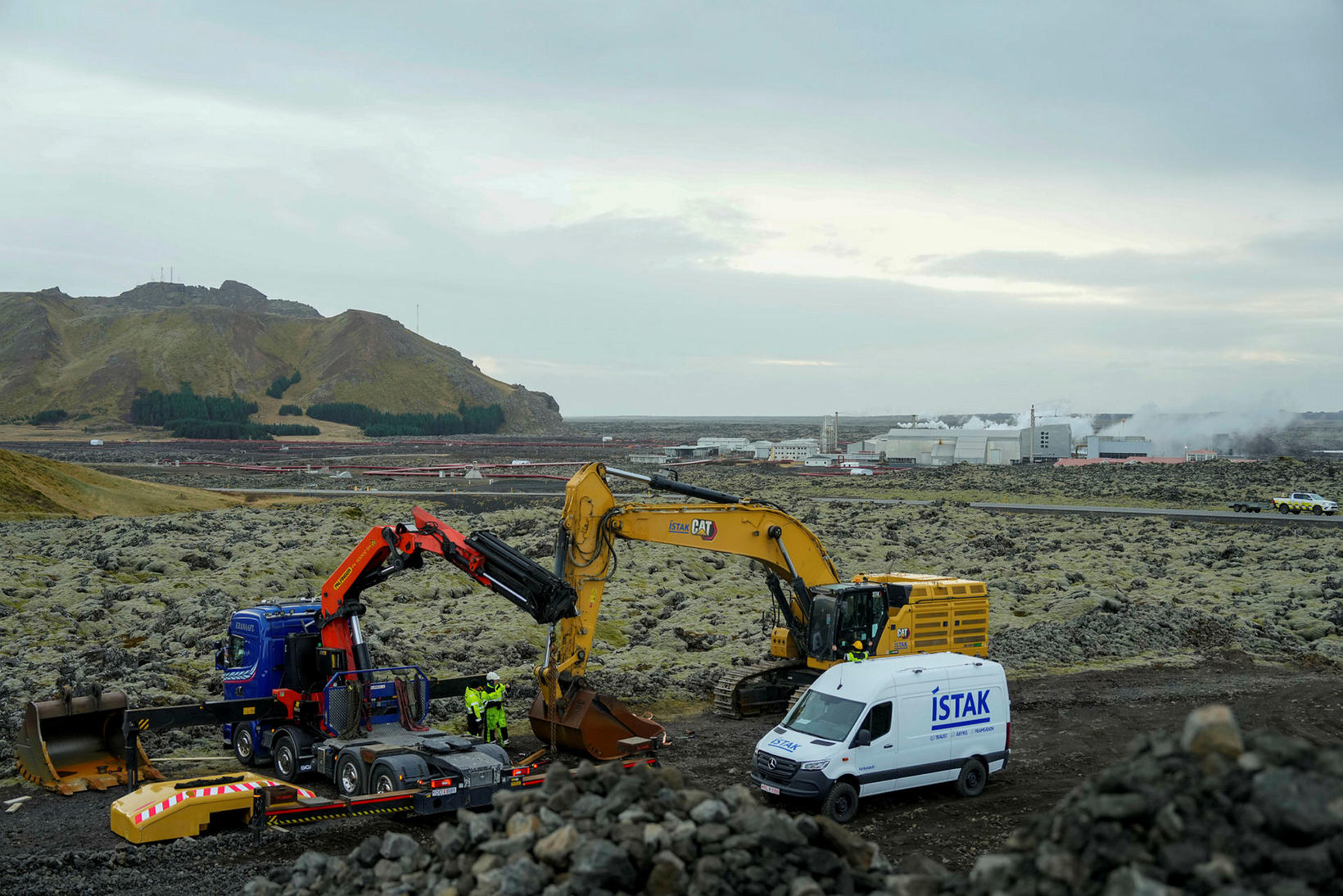Work came to a halt due to bad weather
“Work on the defense walls was basically stopped last night. It’s a bit affected by the weather, but the Met Office issued a statement that it couldn’t monitor the area safely with air quality meters, so we took the decision to stop last night and we’re going to stop today as well. We’ll then re-evaluate the situation later today, before the night shift starts. So this is the situation at the moment.”
This is what Arnar Smári Þorvarðarson, a construction engineer at Verkís, says, when asked whether the new risk assessment issued yesterday has changed plans for the development of the Reykjanes peninsula's defensive walls to some extent.
The first phase is well on its way
According to Þorvarðarson, the work has progressed well, but the construction has been carried out day and night, with continious 12 hours shifts.
“We’ve started in all the areas and along Sundhnúkar crater row, where we’re pretty far with this first stage we planned, east of Grindavíkurvegur road to Sýlingarfell. There’s now a fairly high defense wall there.”
According to Þorvarðarson, the group, which numberes over 50 people, is working hard to finish the project quickly and efficiently.
“To a certain extent, it’s a race against time, but of course we don’t know exactly what’s wil will be dealing with. But we work day and night, 12 hours a day,” he says.
There are 50 people working day and night on the defense walls in the area around Grindavík. mbl.is/Eyþór Árnason
The height of 3 meters is relative
When asked whether the dikes need to be raised in light of the increasing land rise at Svartsengi in recent days, he says it is not necessary.
“No, not with regards to their elevation. We’re just racing to take this first stage, which is to go up to three meters. We prioritize the defense walls based on the advice we receive from volcanologists and on flow-rate predictions, where the lava could occur. Our work takes in the information we get in how we proceed with the work process.”
He says that the work began at Sýlingarfell and continued to the west, but that yesterday work with Mt. Þorbjörn began, in the area of the defense wall that is farthest south.
But what about the scheduled completion, do they see when the defense walls will be ready?
“This first week we were just focused on driving, driving and driving as much as possible, but people are looking a little bit more at it this week, maybe setting up some realistic timetable for this,” he says.
“We’ve reached this first stage in height, we’re approaching it on the rim of Sundhnúkar crater row. We’re not quite there yet, but we’re competing to finish.”
“We want to reach three meters above such high points where the lava flows, we want to be three meters above them. Which means that three meters can be five or six meters somewhere,” he says, adding that in this way the dikes will be considerably higher in some places in terms of lava flow models because the height is relative and takes into account the predictions in regard to suggested height in specific areas.
People are still standing
In response to the well-being of employees in the area, he answers that people generally feel fine.
“We’ve discussed this at these safety meetings that people should let us know if they don’t trust themselves to be here. Then we’ll deal with it and try to move people to the area, but nothing like this has ever happened. People are still all standing,” he says, adding that it’s completely clear to all that it will not be an issue if people feel bad in these circumstances and don’t feel comfortable working in the area.











